Comic for January 18, 2020
https://ift.tt/2twqS3n
fun
via Dilbert Daily Strip http://dilbert.com
January 18, 2020 at 02:16AM
Just another WordPress site
Comic for January 18, 2020
https://ift.tt/2twqS3n
fun
via Dilbert Daily Strip http://dilbert.com
January 18, 2020 at 02:16AM
Generate PDF from HTML Using Laravel Snappy Package
https://www.youtube.com/watch?v=P43fuBbmD1c
In this tutorial, you will learn how to create a pdf file from an HTML markup or blade view file in Laravel with examples.
programming
via Laravel News Links https://ift.tt/2dvygAJ
January 17, 2020 at 09:06AM
Programming Katas Explained
https://ift.tt/2qJfgc7

Kata is a martial arts term from Japan that refers to a choreographed sequence of movements. The goal is to perfect and internalize these movements through repetition and memorization. Once mastered, these sequences serve as a reference guide that you can instantly reach for and adapt without thought.
Outside of martial arts, this word, kata, is used more generally to refer to any set of steps or patterns that is repeated until mastery. Think of it as a way to harness your form and routine.
Published on Jan 15th, 2020.
programming
via Laracasts https://ift.tt/1eZ1zac
January 17, 2020 at 01:08PM
Zipline Dive Catapult
https://ift.tt/38fKpUm
They guys from DD Squad rigged up a crazy zipline with a hard stop in the middle, making their athletes catapult into the river below when they hit the sweet spot. Given their acrobatic skills, they had to show off with some crazy flips.
fun
via The Awesomer https://theawesomer.com
January 16, 2020 at 02:45PM
FIRST LOOK: The Performance Center M&P M2.0 Full-Size Pistol
https://ift.tt/2x5SopN
Smith & Wesson’s Performance Center takes some of the company’s most popular production guns and enhances them to produce a line of semi-custom firearms. Sometimes these guns possess additional features and refinements. But they all receive an extra degree of attention not lavished on standard production guns. S&W Performance Center ‘smiths spend extra time mating internals and polishing parts to perfection for smooth and flawless function.
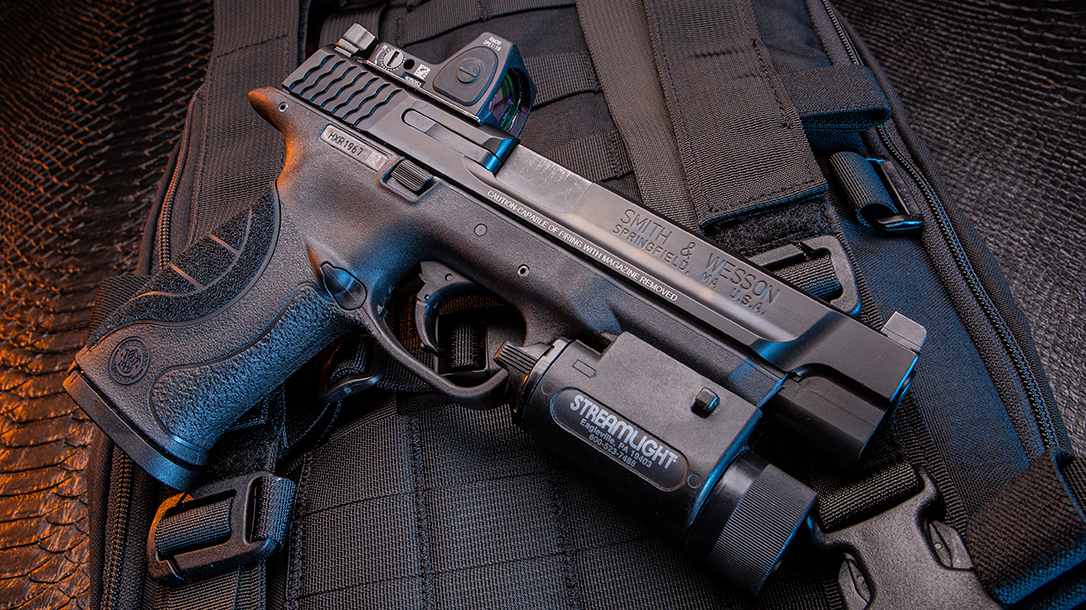
RELATED STORY
Gun Test: Smith & Wesson Performance Center M&P9L Pro Series Core
Our publisher, Athlon Outdoors, brought in a number of firearms companies to spend time with writers this past October. The Rendezvous was held inn Driggs, Idaho, and Smith & Wesson was one of the companies to attend. Among the new products was a Performance Center Ported M&P9 M2.0 pistol. Matt Spafford, S&W’s Media Manager, took some time to detail me on the new gun.
This particular gun features a 5-inch stainless steel and ported barrel and is chambered for 9mm. Because the barrel and slide extend past the end of the M&P9 frame, S&W engineers designed an extended rigid stainless-steel chassis, embedded into the frame’s polymer, to reduce flex and torque. Spafford noted that this gun was the first of the Performance Center offerings to incorporate the new M&P M2.0 upgrades, which include the scale-style cocking serrations, enhanced grip texture, and improved sear geometry, giving the gun a crisper trigger.
Spafford noted the PC craftsmen spend a great deal of time judiciously polishing the sear’s engagement surface. First generation guns possessed a trigger pull around 6.5 pounds, and the 2.0 guns run about 5.5 pounds. Performance Center ‘smiths crafted a trigger pull that broke crisply at 4.5 pounds with a firm and audible reset. Quite frankly, the sample I fired in Idaho had one of the nicest triggers I’ve ever pulled on a striker-fired gun.
Building a gun that can fulfill the needs for competition and self-defense can be daunting, but the PC Ported M&P9 M2.0 seems to easily accomplish that mission. Its sights are easily picked up with the front sight, possessing a green fiber-optic rod, while the fully adjustable rear sight has two red fiber-optic rods on either side of the rear notch. Even on a cloudy day the florescent pipettes burned brilliantly, making quick sight acquisition easy.
In keeping with the dual theme of competition and self-defense, the Performance Center ports the barrel and slide in an effort to help minimize muzzle disruption. The Performance Center cuts dual ports on the barrel at the 11 and 1 o’clock positions about 5/8-inch back from the muzzle. In addition to the slide vent ports there are also a number of other slide lightening cuts made to reduce its weight for proper slide velocity. Recoil and muzzle flip of the Ported M&P9 is anything but snappy. In fact, it is a very soft-shooting gun! The combination of the long sight radius, fiber-optic sights, crisp trigger and firm reset made it possible to fire astonishingly fast and accurate double taps. The Performance Center makes guns with competition in mind, designed to shoot fast and stay on target, according to Spafford.
The PC Ported M&P9 M2.0 also possesses a railed dust cover, so a weapon light and or laser can be mounted for low-light defense. It also has an ambidextrous slide lock located on the right side of the frame. S&W ships the pistol with two 17-round magazines as well as a Performance Center cleaning kit. Backed by S&W’s lifetime service policy, the PC Ported M&P9 M2.0 should provide its user with a first-rate competition and defense gun.
For more information, visit smith-wesson.com.
The post FIRST LOOK: The Performance Center M&P M2.0 Full-Size Pistol appeared first on Tactical Life Gun Magazine: Gun News and Gun Reviews.
guns
via Tactical Life Gun Magazine: Gun News and Gun Reviews https://ift.tt/2i7bVLS
January 15, 2020 at 10:24AM
An Inside Look at How AR-15 Barrels Are Made: DC Machine
https://ift.tt/2w0D91v
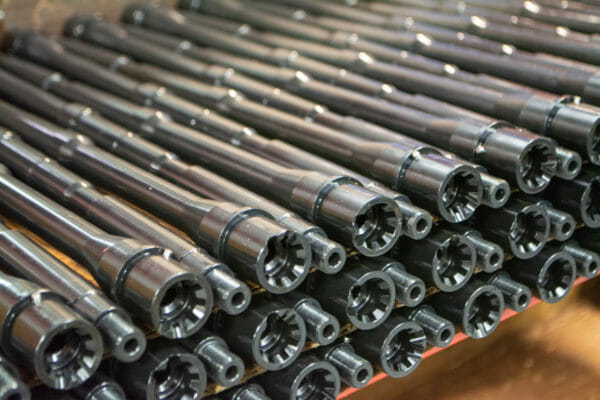
U.S.A. –-(Ammoland.com)- DC Machine is the biggest machining company you may never have heard of. However, you are likely familiar with Palmetto State Armory, located in Columbia, South Carolina. PSA is one of the fastest-growing gun companies in the history of ever. While the operate a handful of retail stores, they sell lots and lots of guns and shooting gear across the country online and through other retail outlets. As it so happens, Palmetto State Armory and DC Machine are sister companies. I recently had the opportunity to tour the DC Machine operation and get a first-hand look at how quality barrels are made.
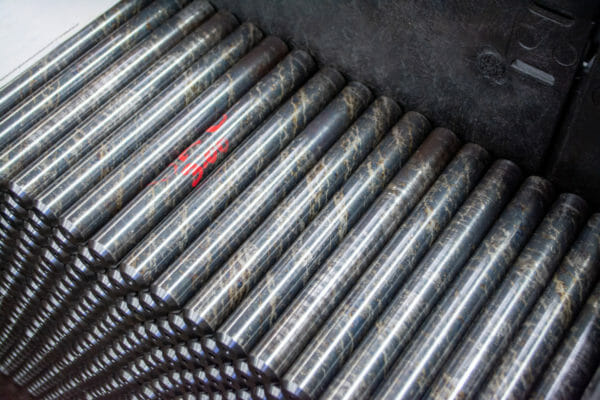
Before we get started, I should mention that we’re not talking some small operation here. While I don’t want to get too specific about company secrets, I will say that the company produces way more than “hundreds” of barrels per day. A lot more. Does that give you a picture? I was stunned by the volume pouring out of this Summerville, South Carolina manufacturing plant.
Without further delay, let’s embark on a pictorial tour of how DC Machine produces the barrels you and I see in the market.
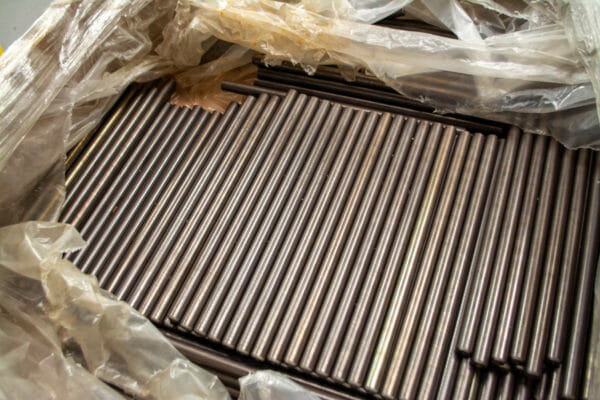
The raw materials for barrel manufacture show up at the back door as steel bar stock like this. You’ll see different lengths of these as it doesn’t make sense to cut unnecessary material when making a shorter barrel.
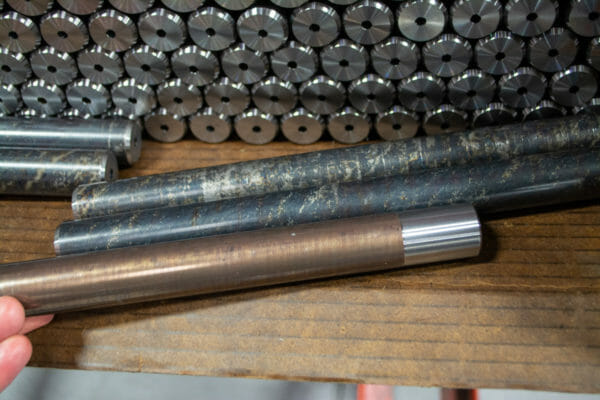
You’ll notice that some raw material stock bars are different colors. This is on purpose. DC Machine has their suppliers coat the raw material with different color finishes to denote the specific type of steel of each bar. It doesn’t matter to you as the finish is machined away during the process, but it helps the production line ensure that the right steel is used on the right barrel.
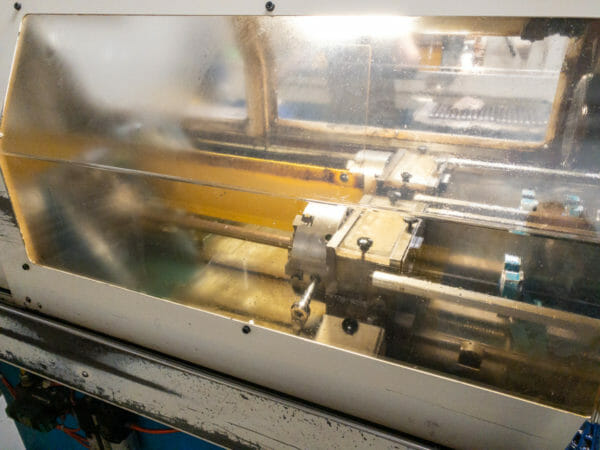
Step one in the process is to drill out the bore. There’s no rifling at this stage, just a smooth hole of the correct diameter for the final caliber. From this point on, the reference point for machining operations is the bore itself. All exterior material is machined away using the “hole” as a guide.
DC Machine uses a top-secret button rifling process to wring maximum consistency and accuracy out of the barrels. I was able to watch a few being made and was stunned by the smoothness and speed of the operation. Sorry, we can’t show it here. Trade secret!
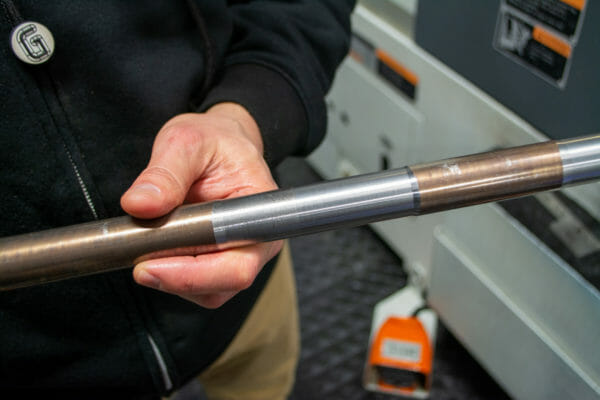
Again using the bore as the guide, the barrel blanks are “trued up” by trimming away all excess material that is not perfectly aligned with the bore. The result is a perfect cylinder with the bore in the absolute center. This helps with machining the final barrel contours later in the process.
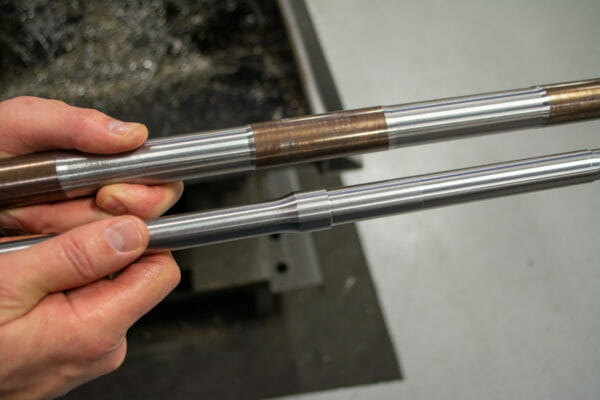
Next up more material is removed and the contours of the final barrel begin to take shape.

During the process from first step on, each machine and step is closely monitored by quality control and the results show up in real-time on plant floor monitors. In fact, Quality Engineer Mark Petty gets notifications on his smartphone the second anything in the process starts to drift away from strict tolerances.
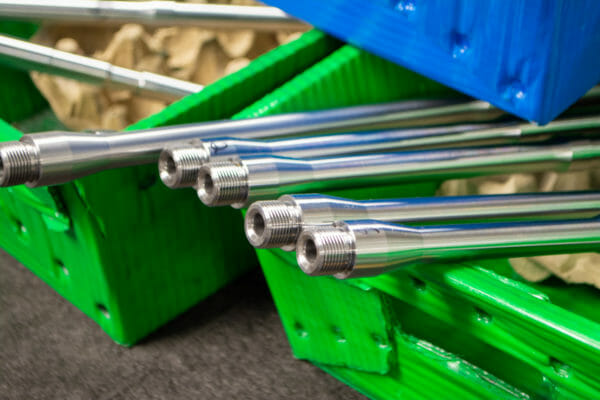
At this stage, the breech end of the barrels are threaded for attachment of the barrel extension and chambers are cut.
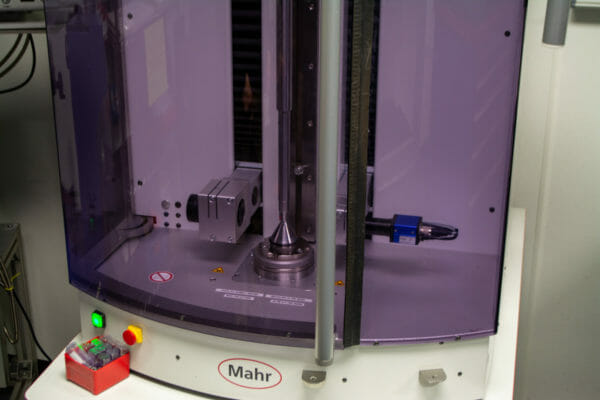
Once barrels start to take shape, they’re tested by a laser inspection machine like this one to ensure that all tolerances are far, far better than mil-spec. Close inspection like this helps the production team know exactly when a certain toolhead in a certain machine needs maintenance or replacement.
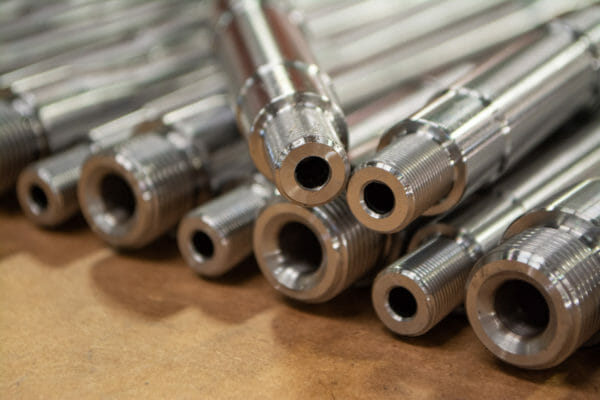
If you look closely at the two barrels on top, you’ll see the one on the left has an unfinished muzzle. On the right you can see the crown of the muzzle has been cut. The idea is to make sure that the internal rifling comes to an abrupt and perfectly clean and smooth end. The tiniest burr or imperfection can harm accuracy as this is the last contact a moving bullet has with the barrel.
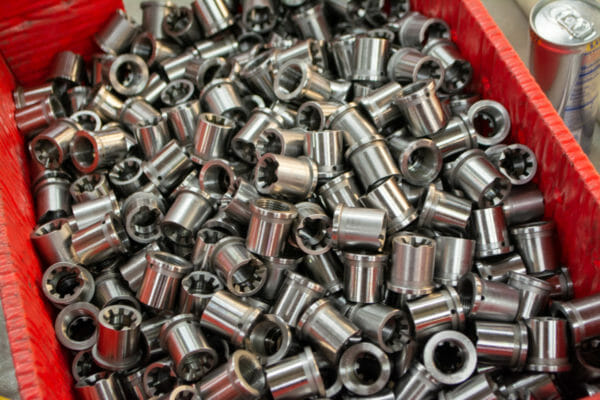
DC Machine also makes barrel extensions. Lots and lots of them.

Once the barrel extensions are attached, the process is almost complete.
The barrels have been monitored, measured, and lasered for quality control throughout the process. At the very end of the line, just before packaging, is a final visual inspection and hand buffing to remove any rough spots on the exteriors from the machining process.
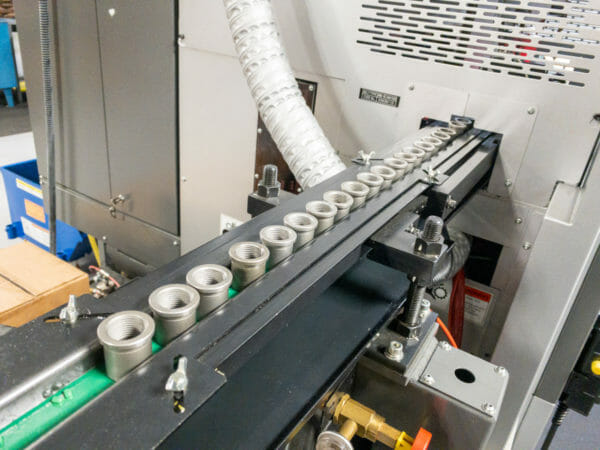
Part of the reason that DC Machine can produce so many quality barrels per day is the investment in automated computer-controlled machining equipment. Most steps in the process have some way of working on multiple parts of the same type concurrently. Those that don’t have automated feed systems, like this, to process parts as quickly as possible.
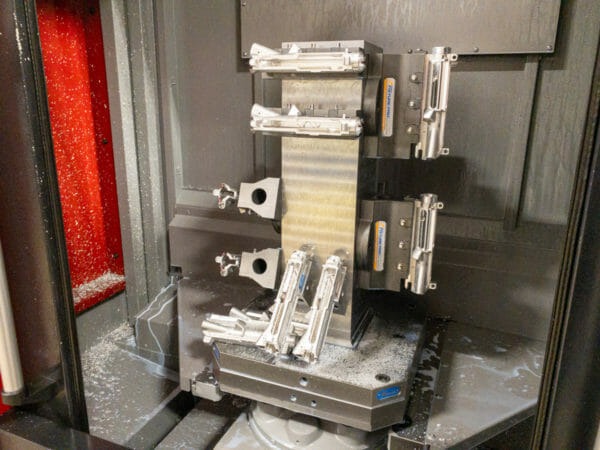
This single milling machine is cutting eight upper receivers in one operation. By changing out eight parts at once, the operator can produce far more receivers per hour.
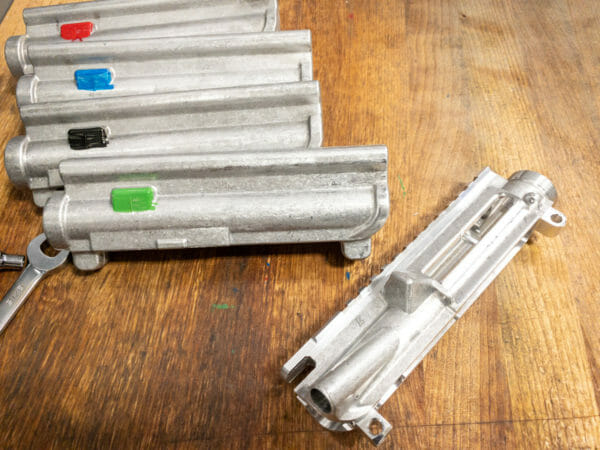
DC Machine receives forged aluminum upper receiver blanks. Once in this plant, they’re machined to final completion.
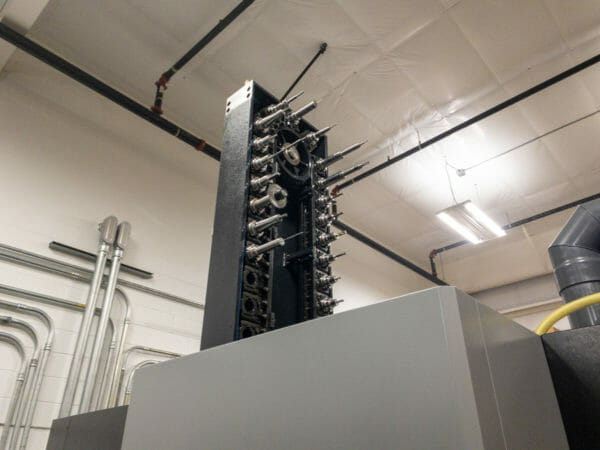
Note now many toolheads are in the conveyor of this single machine. It extends almost to the floor. The more a single machine can do, the fewer changes from machine to machine. That leads to better consistency and higher production throughput.
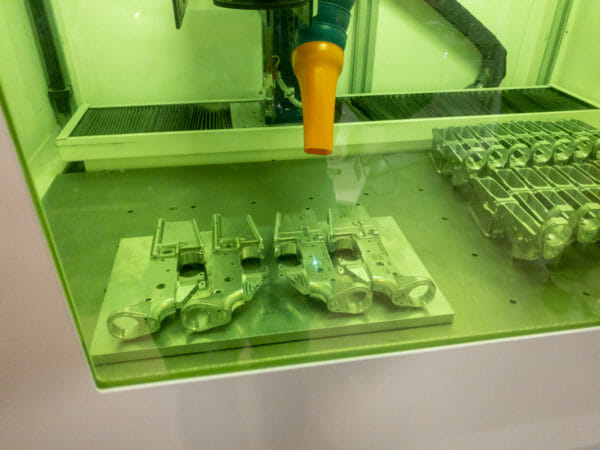
Ever wondered how that receiver engraving is done? Right here in the laser engraving department. Using the laser is not only fast and precise, it allows for easy changes to the engraving design from batch to batch.
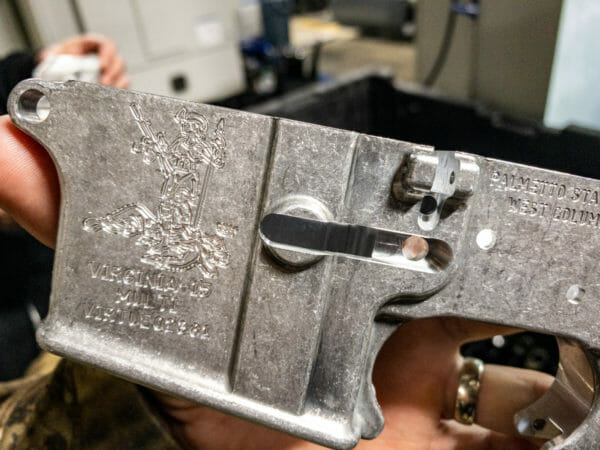
DC Machine and Palmetto State Armory often product “meme engravings” on AR lower receivers. This one benefits the Virginia gun rights movement. You might notice the “Lady Freedom” is wearing night-vision goggles, toting an AR-15, and standing on a tyrant.
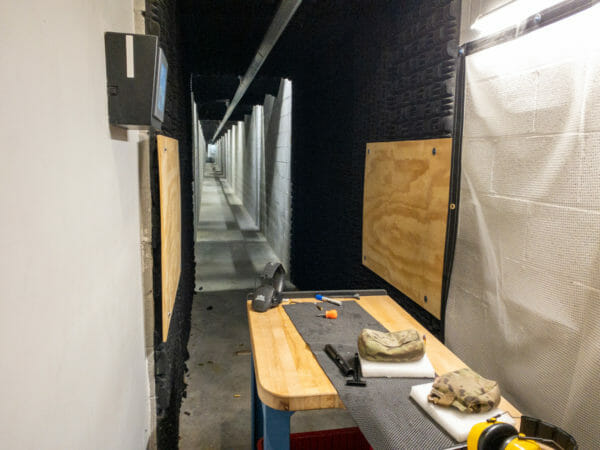
Sales Manager and Quality Engineer Mark Petty has this indoor rifle testing range literally in his office. If there are questions, or if he simply wants to field test production quality, he can do it right here,
The modern manufacturing process is stunning. This is exactly how the folks at Palmetto State Armory can produce and sell quality rifles at reasonable prices. One of the most fun parts of the tour was seeing Mark’s bragging collection. He showed me a couple of custom barrels (I won’t mention the names, but they’re expensive) that he won betting on the accuracy of a standard DC Machine barrel versus that of one listing at five times the price. That’s good stuff for you and I.
About
Tom McHale is the author of the Practical Guides book series that guides new and experienced shooters alike in a fun, approachable, and practical way. His books are available in print and eBook format on Amazon. You can also find him on Facebook, Twitter, Instagram and Pinterest.
The post An Inside Look at How AR-15 Barrels Are Made: DC Machine appeared first on AmmoLand.com.
guns
via AmmoLand.com https://ift.tt/2okaFKE
January 15, 2020 at 12:05PM
Google v. Oracle: Amici Weigh in on Why the Supreme Court Should Reverse the Federal Circuit’s Rulings
https://ift.tt/3885m3O
Guest post by Professor Pamela Samuelson, Berkeley Law School
In the past week 28 amicus curiae briefs were filed in the Google v. Oracle case, including one written by me and Catherine Crump (of which more below). All but two support reversal of one or both of the Federal Circuit’s copyrightability and fair use rulings.[1]
Especially significant are IBM’s brief with Red Hat arguing against the copyrightability of computer interfaces and Microsoft’s brief criticizing the Federal Circuit’s unduly rigid fair use analysis and indifference to the need for flexible rules that promote interoperability in today’s highly connected world. The briefs are substantively excellent, and significant because these firms are such prominent developers of software.
For those interested in the case who are not computing professionals, I recommend the amicus briefs submitted by 83 computer scientists and by the Developers Alliance which explain the Java API technology and why reuse of Java declarations and interfaces generally is so important to enabling compatibility. Several other briefs, including one for the Center for Democracy and Technology et al., and another for R Street and Public Knowledge, offer numerous examples of compatible software systems that benefit consumers as well as software developers
By my count, more than half of the 28 amicus briefs focus only on the copyrightability issue and another 9 address both the copyrightability and fair use issues. Only 4—the Microsoft, Tushnet, Snow, and Rauschenberg Foundation briefs–address only fair use. This was a something of a surprise given that the fair use decision seems quite vulnerable to challenge. After all, a jury rendered a verdict in favor of Google’s fair use defense, and appellate courts are supposed to defer to jury verdicts. Several amicus briefs take the Federal Circuit to task for substituting its judgment on the merits for the jury’s as to issues about which there was conflicting evidence in the record. Also much criticized are the Federal Circuit’s analysis of the four fair use factors and the manner in which it weighed the factors together.
One very pragmatic reason why some amici would prefer that the Court rule on the copyrightability issue over the fair use issue is that fair use is a fact-intensive, complex, and much debated limitation on copyright. Google may be able to litigate software interface copyright cases for a decade or more, as it has done in this case, but startups and other small and medium-size companies as well as open source developers would prefer the certainty of a no-copyright-in-interfaces rule, as several amicus briefs pointed out. If the Court rules that interfaces are not protectable by copyright law, litigation over reuses of interfaces is much less likely. And if some developer does bring suit, chances are good that the case can be won on a motion to dismiss or for summary judgment
Software developer and industry association amici point to a longstanding consensus on the distinction between interfaces and implementations: interfaces should be free for reuse as long as developers reimplement the interfaces in independently created code. The Federal Circuit’s Oracle decisions have upset settled expectations in the industry, and if the Court upholds them, it would have, as Microsoft asserts, “potentially disastrous consequences for innovation.”
The American Antitrust Institute was among the amici that emphasized the potential for copyright in program interfaces to have anti-competitive effects by entrenching dominant firms and creating barriers for new entrants in the software business. This is particularly of concern in view of network effects which, even without interface copyright monopolies, make it difficult for users and developers to switch to new systems.
The Computer & Communications Industry Association and the Internet Association amicus brief provides a historical review of the evolution of software copyright caselaw. Although a few early decisions construed copyright as providing broad protection to program structures such as interfaces, landmark decisions by the Second and Ninth Circuits recognized that interfaces which constitute the functional requirements for achieving compatibility among programs should not be protectable by copyright law. Other courts followed these rulings. The Oracle decision deviates from this body of caselaw. Some amici regard interfaces as patent, not copyright, subject matter.
The amicus brief Catherine Crump and I co-authored and submitted on behalf of 72 intellectual property scholars positioned the pro-compatibility decisions within the framework of the Supreme Court’s 19th-century rulings in Perris v. Hexamer and Baker v. Selden, which originated the exclusion of methods and systems and their constituent elements from the scope of copyright; dozens of decisions applying these exclusions; their codification in 17 U.S.C. § 102(b); and caselaw applying these exclusions to software interfaces that enable compatibility. Our brief also explains why the District Court’s alternative ruling in favor of Google’s merger defense was consistent with Baker and its progeny and that merger provides a sound basis for finding that program interfaces that enable compatibility, such as the Java SE declarations, are unprotectable by copyright law.
Oracle will obviously have a different take on these issues when it files its brief due February 12. Amici in support of its position must submit their briefs within the following week.
Google will have an opportunity to file a reply brief in mid-March. Oral argument before the Court may be scheduled in late March.
= = = = =
[1] Although the American Intellectual Property Law Association is one of the briefs in support of neither party, the substance of its arguments on both the copyrightability and fair use arguments are quite close to the positions of Google and pro-interoperability amici. The other “neutral” amici were the Robert Rauschenberg and Andy Warhol Foundations which expressed concern about a possible interpretation of fair use that would undermine artistic freedom to engage in creative reuses by artists.
legal_stuff
via Patent Law Blog (Patently-O) https://patentlyo.com
January 14, 2020 at 06:26PM
There Isn’t A Single American Car On This 2020 List Of Vehicles People Keep For At Least 15 Years
https://ift.tt/30mYXyN

Once again our friends at iSeeCars, have crunched some data to find out which cars are likely to be kept for 15 years or more. This year’s list doesn’t look terribly different than the one from last year and is basically dominated by only two brands.
Once again the Toyota Highlander tops the list but gone is the Prius that had the number two spot in 2019. From there it’s a fairly predictable list of other Toyotas, Hondas, and the Subaru Forester. Though it is a bit surprising to not see anything domestic like the Expedition or Suburban as those rigs have popped up on previous lists for higher mileage cars.
On the longest kept SUV list the Mitsubishi Outlander makes a surprise appearance in the number eight spot. Can you imagine keeping a 2005 Outlander for all this time? Look at this thing –
I suspect that perhaps some folks just now getting around to paying off their loan to Mitsubishi motors given how often some Mitsu dealers are a bit notorious for rolling over negative equity into really long loans.
However, I do take a bit of an issue with the iSeeCars list of sports cars, as there are an awful lot of sporty sedans on this, and while many of them may be great performance cars, the sedan body pretty much disqualifies them as a “sports car.”
For more data including the pickup trucks that owners keep the longest see the full study at iSeeCars.com
geeky,Tech,Database
via Lifehacker https://lifehacker.com
January 14, 2020 at 05:22PM
A Homemade Belt-Fed Full-Auto Shotgun? Yes, Please!
https://ift.tt/2w4bAV4
In this pair of short-but-sweet videos, we see the delightful product of an inventive mind: A fully-automatic belt-fed 12 gauge shotgun! Oh my.
We have seen homemade guns before. You have probably even seen homemade machineguns before. But have you ever seen a homemade machinegun which fires 12 gauge shotgun shells — and which is belt-fed, thus not requiring a magazine?
Well, now’s your chance.
It’s pretty wonderful to me, but it jams a number of times in the video — which is only 32 seconds long. So I’d say it is in need of refinement… but it sure does look like fun.
Here’s another video of what appears to be the same belt-fed shotgun machinegun (I really enjoy saying that) — if not, it’s very similar — and again, it jams pretty often. But oh, the BOOMBOOMBOOMBOOM when it does run is well worth the watch!
The post A Homemade Belt-Fed Full-Auto Shotgun? Yes, Please! appeared first on AllOutdoor.com.
guns
via All Outdoor https://ift.tt/2yaNKUu
January 14, 2020 at 05:02PM
How Ice Cream Cones Are Made
https://ift.tt/2QTnfxy
Making waffle cones at home is pretty darned easy to do. But when you need to churn out millions of these tasty treats every month, you need some serious industrial equipment. In this classic video from How It’s Made, they show us just how factories mass-produce waffle, sugar, and cake cones.
fun
via The Awesomer https://theawesomer.com
January 14, 2020 at 12:30PM